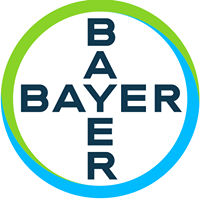Request Demo
Last update 08 May 2025
α-glucosidase x AMYs
Last update 08 May 2025
Basic Info
Related Targets |
Related
15
Drugs associated with α-glucosidase x AMYsMechanism Alpha amylases inhibitors [+3] |
Active Org. |
Originator Org. |
Active Indication |
Inactive Indication |
Drug Highest PhaseApproved |
First Approval Ctry. / Loc. Germany |
First Approval Date01 Jan 1990 |
Target |
Mechanism Alpha amylases inhibitors [+1] |
Active Org. |
Originator Org.- |
Active Indication |
Inactive Indication- |
Drug Highest PhasePreclinical |
First Approval Ctry. / Loc.- |
First Approval Date20 Jan 1800 |
Target |
Mechanism Alpha amylases inhibitors [+1] |
Active Org. |
Originator Org.- |
Active Indication |
Inactive Indication- |
Drug Highest PhasePreclinical |
First Approval Ctry. / Loc.- |
First Approval Date20 Jan 1800 |
154
Clinical Trials associated with α-glucosidase x AMYsNCT05487859
A Pilot Study of the Immunomodulatory Agent Acarbose in Combination with Standard Therapy in Metastatic Renal Cell Carcinoma (RCC)
The purpose of this study is to determine the safety and tolerability of acarbose in combination of immunotherapy based standard of care therapy in advanced renal cell carcinoma patients.
Start Date31 Dec 2025 |
Sponsor / Collaborator |
CTR20244876
阿卡波糖片健康人体生物等效性试验
[Translation] Bioequivalence study of acarbose tablets in healthy volunteers
主要研究目的 研究受试制剂阿卡波糖片(规格:0.1g,生产厂家:北京双鹭药业股份有限公司)和参比制剂阿卡波糖片(商品名:拜唐苹®,规格:0.1g,持证商为拜耳医药保健有限公司)在健康受试者空腹状态下单剂量给药时的药效动力学特征,评价两制剂的人体生物等效性。 次要研究目的 观察受试制剂阿卡波糖片和参比制剂拜唐苹®在健康受试者中的安全性。
[Translation]
The main purpose of the study is to study the pharmacodynamic characteristics of the test preparation acarbose tablets (specification: 0.1g, manufacturer: Beijing Shuanglu Pharmaceutical Co., Ltd.) and the reference preparation acarbose tablets (trade name: Baytangping®, specification: 0.1g, licensee is Bayer Pharmaceuticals Co., Ltd.) when administered as a single dose to healthy subjects in the fasting state, and to evaluate the bioequivalence of the two preparations in humans. The secondary purpose of the study is to observe the safety of the test preparation acarbose tablets and the reference preparation Baytangping® in healthy subjects.
Start Date10 Feb 2025 |
Sponsor / Collaborator |
CTR20241881
阿卡波糖片在健康受试者中的生物等效性研究
[Translation] Bioequivalence study of acarbose tablets in healthy subjects
主要研究目的:本试验旨在研究空腹状态下口服上海现代制药股份有限公司研制、生产的阿卡波糖片(规格:50mg)的药效动力学特征,并以拜耳医药保健有限公司持证的阿卡波糖片(拜唐苹®,规格:50mg)作为参比制剂,比较两制剂药效动力学参数,评价两制剂的人体生物等效性。 次要研究目的:观察受试制剂和参比制剂在健康受试者中的安全性。
[Translation]
Main research purpose: This study aims to study the pharmacodynamic characteristics of acarbose tablets (specification: 50 mg) developed and produced by Shanghai Modern Pharmaceutical Co., Ltd. when taken orally under fasting conditions, and to compare the pharmacodynamic parameters of the two preparations and evaluate the bioequivalence of the two preparations in humans using acarbose tablets (Baytangping®, specification: 50 mg) certified by Bayer Healthcare Co., Ltd. as the reference preparation. Secondary research purpose: To observe the safety of the test preparation and the reference preparation in healthy subjects.
Start Date18 Jun 2024 |
Sponsor / Collaborator |
100 Clinical Results associated with α-glucosidase x AMYs
Login to view more data
100 Translational Medicine associated with α-glucosidase x AMYs
Login to view more data
0 Patents (Medical) associated with α-glucosidase x AMYs
Login to view more data
2,140
Literatures (Medical) associated with α-glucosidase x AMYs31 Dec 2025·Journal of Enzyme Inhibition and Medicinal Chemistry
Bioactivity profiling of
Sanghuangporus lonicerinus
: antioxidant, hypoglycaemic, and anticancer potential via
in-vitro
and
in-silico
approaches
Article
Author: Abdullaev, Ikram ; Petri, Edward ; Gafforov, Yusufjon ; Ghosh, Soumya ; Lim, Young Won ; Yarasheva, Manzura ; Rašeta, Milena ; Živanović, Nemanja ; Bekić, Sofija ; Chen, Jia Jia ; Abbasi, Arshad Mehmood ; Mišković, Jovana ; Wan-Mohtar, Wan Abd Al Qadr Imad ; Abdullaev, Bekhzod ; Rapior, Sylvie
31 Dec 2025·Future Science OA
Evaluation of polyherbal synergy against diabetes:
in-vitro
analysis
Article
Author: N., Sridevi ; M., Thirumal
01 Dec 2025·Journal of Computer-Aided Molecular Design
Exploring the anti-diabetic potential of the Vigna sesquipedalis using in vitro, in vivo and computational models
Article
Author: Ahmad, Hammad ; Darwish, Hany W ; Khan, Ashraf Ullah ; Alam, Waqas ; Pirzada, Abdul Saboor ; Khan, Haroon
1
News (Medical) associated with α-glucosidase x AMYs23 Oct 2023
Amylase is an essential enzyme found in the human body that plays a crucial role in the digestion of carbohydrates. Produced primarily in the salivary glands and pancreas, amylase breaks down complex starch molecules into simpler sugars like glucose, maltose, and dextrin. This process begins in the mouth, where salivary amylase initiates the breakdown of starches into smaller fragments. Once in the stomach, the enzyme continues its action until it reaches the small intestine, where pancreatic amylase takes over to complete the digestion process. Without amylase, the body would struggle to efficiently convert carbohydrates into usable energy, leading to potential digestive issues and nutrient deficiencies.
Amylase Competitive LandscapeAccording to Patsnap Synapse, as of 27 Sep 2023, there are a total of 5 amylase drugs worldwide, from 6 organizations, covering 7 indications, and conducting 1 clinical trials.
👇Please click on the picture link below for free registration or login directly if you have freemium accounts, you can browse the latest research progress on drugs , indications, organizations, clinical trials, clinical results, and drug patents related to this target.
Based on the analysis of the provided data, the current competitive landscape of target amylase indicates that companies like Anagram Therapeutics, Inc. and Propanc Biopharma, Inc. are growing rapidly in their R&D efforts. Drugs targeting amylase have been approved for indications such as Exocrine Pancreatic Insufficiency, Neoplasms, Ovarian Cancer, Solid Tumors, Pancreatic Cancer, Malabsorption Syndromes, and Gastrointestinal Diseases. Enzyme-based drugs and small molecule drugs are progressing rapidly, indicating potential competition around innovative drugs. The countries/locations with significant development in target amylase include the United States, European Union, Australia, Spain, France, Denmark, and Belgium. However, the progress in China cannot be determined based on the provided data. Overall, the target amylase market shows promising growth potential with active R&D efforts and a diverse range of indications and drug types.
Key drug: AcarboseAcarbose is a small molecule drug that falls under the therapeutic areas of endocrinology and metabolic disease. It is primarily used for the treatment of diabetes mellitus, specifically type 2 diabetes. The drug targets several enzymes including alpha-amylase, GANC, MGAM, and α-glucosidase.
👇Please click on the image below to directly access the latest data (R&D Status | Core Patent | Clinical Trial | Approval status in Global countries) of this drug.
The originator organization of Acarbose is Bayer AG, a well-known pharmaceutical company. The drug has reached the highest phase of approval globally, indicating its successful development and regulatory progress. Acarbose received its first approval in the United States in September 1995, making it available to patients in that country.
One notable aspect of Acarbose is its regulation status, which is classified as priority review. This suggests that the drug has undergone an expedited evaluation process by regulatory authorities, possibly due to its potential benefits and urgency in addressing the medical needs of patients with type 2 diabetes.
Acarbose's mechanism of action involves inhibiting the enzymes targeted, which play a role in the digestion and absorption of carbohydrates. By inhibiting these enzymes, Acarbose helps to slow down the breakdown of complex carbohydrates into simple sugars, thereby reducing the postprandial rise in blood glucose levels. This mechanism makes Acarbose a valuable treatment option for individuals with type 2 diabetes, as it helps to control their blood sugar levels.
In summary, Acarbose is a small molecule drug developed by Bayer AG for the treatment of type 2 diabetes. It targets multiple enzymes involved in carbohydrate digestion and absorption, and its regulatory status as a priority review drug highlights its potential significance in managing this metabolic disease. Acarbose received its first approval in the United States in 1995 and has since been approved in other countries, including China. Its successful development and regulatory progress make it a valuable addition to the pharmaceutical industry's arsenal in combating diabetes mellitus.
Analysis
Perform a panoramic analysis of this field.
login
or

AI Agents Built for Biopharma Breakthroughs
Accelerate discovery. Empower decisions. Transform outcomes.
Get started for free today!
Accelerate Strategic R&D decision making with Synapse, PatSnap’s AI-powered Connected Innovation Intelligence Platform Built for Life Sciences Professionals.
Start your data trial now!
Synapse data is also accessible to external entities via APIs or data packages. Empower better decisions with the latest in pharmaceutical intelligence.
Bio
Bio Sequences Search & Analysis
Sign up for free
Chemical
Chemical Structures Search & Analysis
Sign up for free





